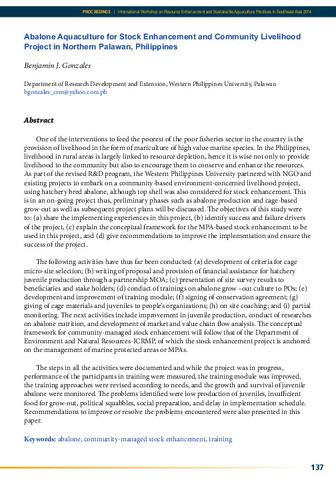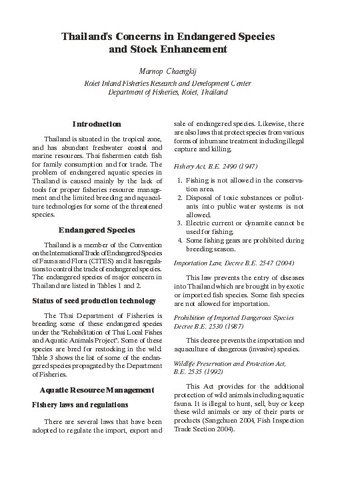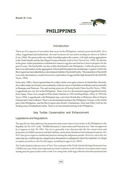Abalone aquaculture for stock enhancement and community livelihood project in northern Palawan, Philippines
Share
Abstract
One of the interventions to feed the poorest of the poor fisheries sector in the country is the provision of livelihood in the form of mariculture of high value marine species. In the Philippines, livelihood in rural areas is largely linked to resource depletion, hence it is wise not only to provide livelihood to the community but also to encourage them to conserve and enhance the resources. As part of the revised R&D program, the Western Philippines University partnered with NGO and existing projects to embark on a community-based environment-concerned livelihood project, using hatchery bred abalone, although top shell was also considered for stock enhancement. This is in an on-going project thus, preliminary phases such as abalone production and cage-based grow-out as well as subsequent project plans will be discussed. The objectives of this study were to: (a) share the implementing experiences in this project, (b) identify success and failure drivers of the project, (c) explain the conceptual framework for the MPA-based stock enhancement to be used in this project, and (d) give recommendations to improve the implementation and ensure the success of the project.The following activities have thus far been conducted: (a) development of criteria for cage micro-site selection; (b) writing of proposal and provision of financial assistance for hatchery juvenile production through a partnership MOA; (c) presentation of site survey results to beneficiaries and stake holders; (d) conduct of trainings on abalone grow out culture to POs; (e) development and improvement of training module; (f) signing of conservation agreement; (g) giving of cage materials and juveniles to people s organizations; (h) on site coaching; and (i) partial monitoring. The next activities include improvement in juvenile production, conduct of researches on abalone nutrition, and development of market and value chain flow analysis. The conceptual framework for community-managed stock enhancement will follow that of the Department of Environment and Natural Resources-ICRMP, of which the stock enhancement project is anchored on the management of marine protected areas or MPAs.The steps in all the activities were documented and while the project was in progress, performance of the participants in training were measured, the training module was improved, the training approaches were revised according to needs, and the growth and survival of juvenile abalone were monitored. The problems identified were low production of juveniles, insufficient food for grow-out, political squabbles, social preparation, and delay in implementation schedule. Recommendations to improve or resolve the problems encountered were also presented in this paper.
Suggested Citation
Gonzales, B. J. (2015). Abalone aquaculture for stock enhancement and community livelihood project in northern Palawan, Philippines. In M. R. R. Romana-Eguia, F. D. Parado-Estepa, N. D. Salayo, & M. J. H. Lebata-Ramos (Eds.), Resource Enhancement and Sustainable Aquaculture Practices in Southeast Asia: Challenges in Responsible Production of Aquatic Species: Proceedings of the International Workshop on Resource Enhancement and Sustainable Aquaculture Practices in Southeast Asia 2014 (RESA) (pp. 137-146). Tigbauan, Iloilo, Philippines: Aquaculture Dept., Southeast Asian Fisheries Development Center.
Subject
Related items
Showing items related by title, author, creator and subject.
-
Thailand's concerns in endangered species and stock enhancement
Chaengkij, Marnop (Aquaculture Department, Southeast Asian Fisheries Development Center, 2006)The paper provides a comprehensive list of endangered freshwater, brackishwater, and marine aquatic species in Thailand. The Thai Department of Fisheries is breeding some of the endangered species under the “Rehabilitation ... -
Organization and development of stock enhancement in Japan
Sugaya, Takuma (Aquaculture Department, Southeast Asian Fisheries Development Center, 2006)In the 1960s, the Japanese economy was starting to industrialize. The rapid increase in business investment in new factories and equipment stimulated a yearly economic growth rate of approximately 12% (METI 1970). However, ... -
Philippines
Cruz, Renato D. (Marine Fishery Resources Development and Management Department, Southeast Asian Fisheries Development Center, 2004)There are five species of sea turtles that occur in the Philippines, namely green hawksbill, olive ridley, loggerhead and leatherback. Several locations for sea turtles nesting are shown in Table 6 (Cruz, 2004). The green ...





